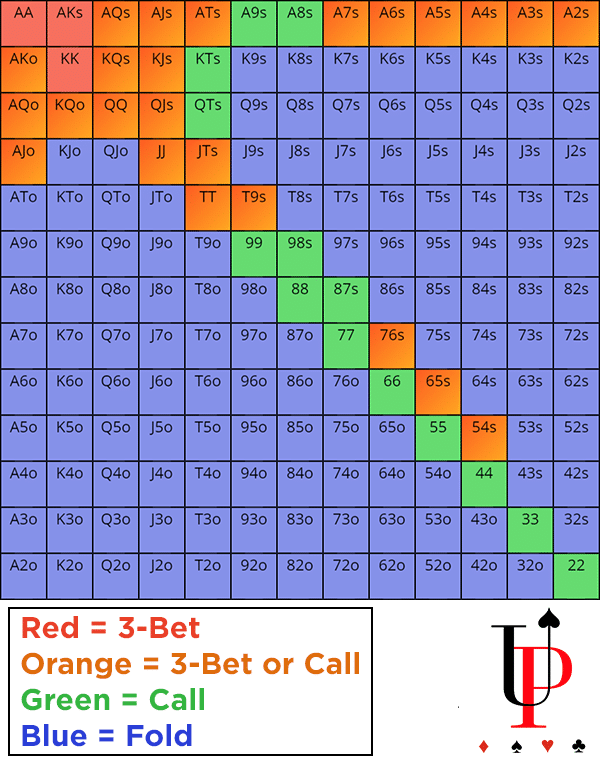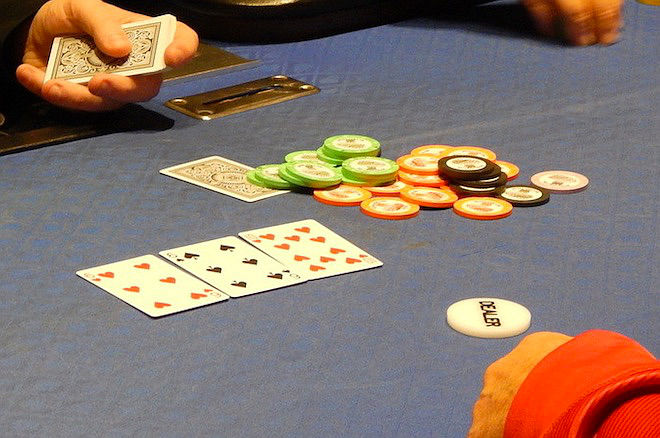Fixed Limit Holdem Tournament Strategy
Many poker players now start out by playing no-limit hold’em and this lesson is intended for those looking to make the transition to fixed-limit hold’em. We’ll focus on differences between the two games. While the betting rules are the main difference between the two formats, there are many other strategic differences.
In its most rudimentary form the main difference between the two is that implied odds drive no-limit and in limit making or saving an extra big bet is what separates good players from their mediocre brethren. One might make the analogy of the first game being similar to a roller coaster and the second a carrousel. While some enjoy the thrill of speed, others prefer the comfort of the merry-go-round.
- Limit Hold'em (LHE) is often seen as the ugly duckling next to No Limit Hold'em. Limit Hold'em might not bring the kick of No Limit, where you can lose your entire stack or double up in one hand. On the other hand, in Limit Hold'em you can keep betting and raising throughout the entire hand, in a sense making it more of an action game.
- Nov 25, 2017 Here are some painful lessons from the bottom end of the poker food chain: low stakes, fixed-limit hold'em. Last time I discussed some of the reasons I enjoy low limit hold'em (i.e, $4/$8.

Limit Hold’em Tips. Fixed-Limit Texas Holdem has been waning in popularity since poker exploded around the turn of the millennium. That being said, it was once the standard in casinos the world over, and to this day it is a very popular form of poker in both cash games and tournaments alike.
For those who have never really embraced limit play and look down upon it, rest assured that there are many pros that make six figure incomes playing limit hold’em without the roller coaster thrashing to their bankrolls that can accompany no-limit play.
The Key Strategic Differences
The following list of differences between the two forms of hold’em should give you an idea of what to pay attention to if you’re switching from no-limit hold’em
Starting Hands
Fixed Limit Holdem Tournament Strategy Tactics
While many unsuited big card starting hands are regularly and correctly played in limit, those same hands can get a player into a heap of trouble in no-limit. Hands such as AQ or KQ can be played aggressively in limit but they can be a disaster in the making in no-limit, especially if the stacks are deep.
Ability / Inability to Manipulate Pot Odds
This difference is obvious but worth noting. Many poker players who play both games will, on occasion, complain at the tables while playing limit that they cannot protect their hands due to the structured betting. Of course these same players, when turning over a losing hand, do not praise the game for allowing them not to have lost their entire stack.
Fixed Limit Holdem Tournament Strategygy
There still are times when a bet and/or a raise can impact the odds offered opponents in limit and accomplished players are always aware of this dynamic.
The Odds
Certainly the knowledge and proper use of odds has a place in both limit and no-limit play. Due to the heightened emphasis on implied odds, no-limit players can many times continue a hand with the worst of it and ultimately prevail and profit handsomely. In limit play, pot odds take on a much more critical role and relying too heavily on implied odds to justify chasing a draw becomes a major downfall of certain players.
Limit is a more mechanical and structured game and adhering to the odds is a must to succeed.
Information
Players need to understand that while one can bet as much as he likes in no-limit, the size of his bets give away information to his opponents as to the strength of his holding. It is for this reason many no-limit players like to keep their bet sizing constant, to avoid giving too much information away. Of course when they play like this – they are playing like limit players. Ironic, don’t you think?
Protecting Your Hand
In no-limit one attempts to manipulate the pot odds to make it ‘incorrect’ for opponents to proceed with draws. Limit players need to focus to the times when being aggressive in an attempt to ‘thin the field’ will work and when knowing all reasonable hands will call your bet anyway. Then your bet/raise will only build a pot that will make it correct for opponents to play.
In limit play pot odds are critical, as implied odds do not take on the emphasis they do in no-limit. Players that fail to make adjustments based upon both the odds they are receiving as well as the odds their opponents are being offered by the pot will not fare well in limit play.
Bluffing
While many believe that bluffing in limit play is a fool’s errand, there is no question that a well timed bluff can work. While bluffs have a much better chance of success in no-limit play, you need to understand that the cost of failure in no-limit can be much higher.
Over the years limit gurus, such as David Sklansky, have advocated that in limit play losing a bet on the end is okay but losing the pot is a disaster. This dictum has led a legion of players to lose a lot of bets on the end and has lost favor in the current limit thinking. Today’s accomplished limit players are not as quick to pay off on the river fearing being bluffed out. This, of course, would indicate that there may well be more opportunities for river bluffs in today’s limit hold’em.
Just know your players, understand the image you have been projecting, assess the board and put yourself in their shoes to evaluate if your bluff is believable.
Stack Sizes


The size of your stack and also your opponents’ has a much greater importance in no-limit versus limit play. Playing with or against a deep stack in no-limit can make significant differences to your strategy. The threat that is evident by the amount of money behind a bet is much larger in no-limit. However it still exists in limit play. In addition, the amount of money a player has on the table also helps create an intimidating presence which can help create positive results in either form of the game.
The Goal
There should be consensus that the single most popular goal of playing poker is to accumulate more chips than you started with. However, in no-limit players are constantly on the lookout for opportunities to double up or take an opponent’s entire stack. In limit play, the accepted guideline for middle limits is to earn one big bet an hour over time. Individual sessions can spike wildly in either direction but a winning player, whether a dedicated amateur or professional, who keeps accurate records will be able to chart this one big bet an hour earn rate.
Conclusion
While the two games look very much the same on the surface they are very different. This will become even more apparent as your progress through our lessons on limit hold’em.
Fixed Limit Holdem Tournament Strategy Tactics
Many players tend to play just one of the hold’em variations, usually being the one they initially learned. There are many others that feel comfortable playing either format. There are then those that can excel at both formats and they are forces to be reckoned with. You should strive to be in this third class of players because they are truly poker players. This third group usually feels right at home with other poker variations such as stud, Omaha, razz and all the different formats. They are truly poker players not just hold’em players.
Related Lessons
By Tom 'TIME' Leonard
Tom has been writing about poker since 1994 and has played across the USA for over 40 years, playing every game in almost every card room in Atlantic City, California and Las Vegas.
The Texas Holdem poker game, the most commonly played community poker, is available either as a tournament game or in a ring game, the tournaments. A tournament game on 바둑이사이트 where you will use tournament chips that are worthless outside of it, but a ring game uses real money or cash. In a ring game, the ante or betting rate remains constant and players can cash in or out of the game after each poker hand. A ring or cash game for Texas Holdem will either be a fixed-limit or a no-limit game. A fixed-limit game will have a bet of a fixed amount while a no-limit game will have a bet of a variable amount depending on the betting player.
Players can choose between a fixed-limit and a no-limit in between games. The strategy to remember when playing a cash game is to be mindful of the game being played will be changed from a no-limit to a fixed-limit game or vice versa. This is because no-limit players will be too aggressive in a fixed-limit game while a fixed limit player will be too passive in a no-limit game. Playing in a game that is not your cup of tea is not recommended.

Fixed Limit Holdem Tournament Strategy Odds
Another strategy when playing in a fixed-limit cash game is to bluff more often. Since betting is more controlled in a fixed-limit cash game, taking risks such as bluffing may be more advantageous to the player than when they decide to remain within their comfort zone.
Playing in cash games also requires adopting a loose playing strategy unlike the tight playing strategy in tournament games. Since the betting rate remains constant throughout the game, a loose playing style will not only be your ticket to winning but will also let you enjoy your game.
A strategy that you can use is to look out for cues of when to play aggressively. You will know that you have a fair chance of winning when you get a combination or a suited pair of ace, king, queen, or jack as your starting hand. Also, having suited cards are always better than non-suited cards because you can have a chance to win with a straight or higher rank.
Armed with the knowledge of how your cards will fare, strategize in reading your opponent. You can not call or raise a bet without any assurance that you have an even slight advantage over your betting opponent. Never look at the face because there are professional players that are poker-faced who can deceive you. Instead, observe the body movements to know if he is upset or not with his cards.
Fixed Limit Holdem Tournament Strategy Payout

Fixed Limit Holdem Tournament Strategyategy
In addition to keen powers of observation, choose to be the last player during card dealing. You will have the advantage of reading the other players as they receive their hole cards. By the time that it is your turn to receive your hole cards, they will be so busy studying their hand that they may forget to observe your reaction while receiving your cards. Throughout the poker game, you will have the advantage to call or fend-off a bluff.